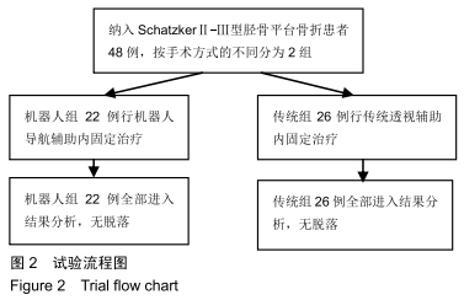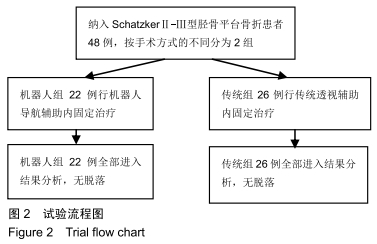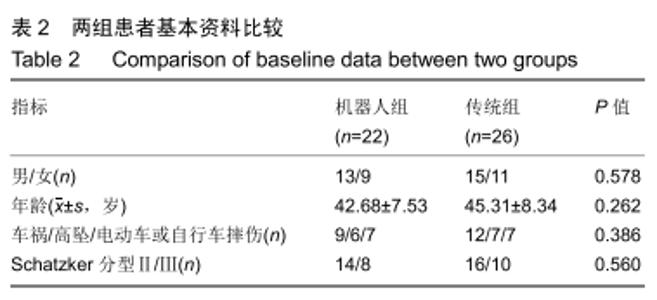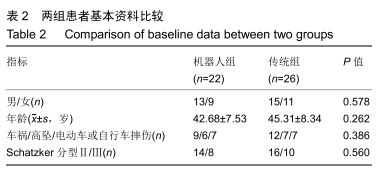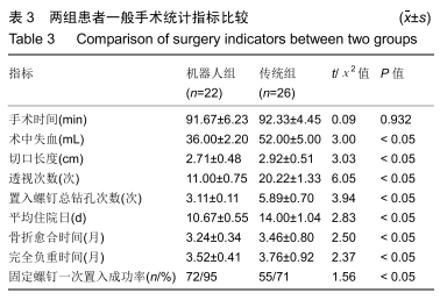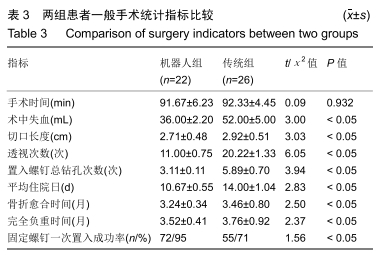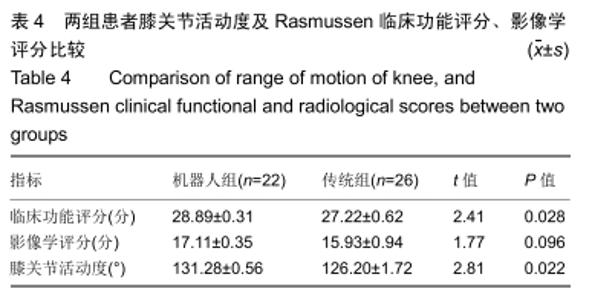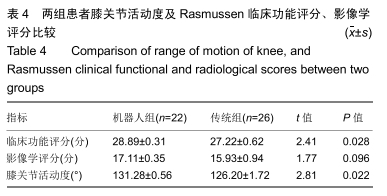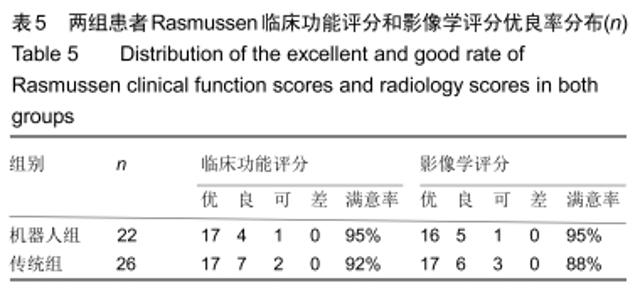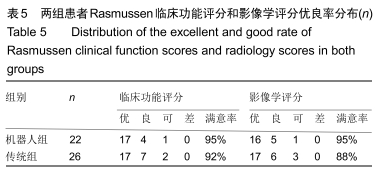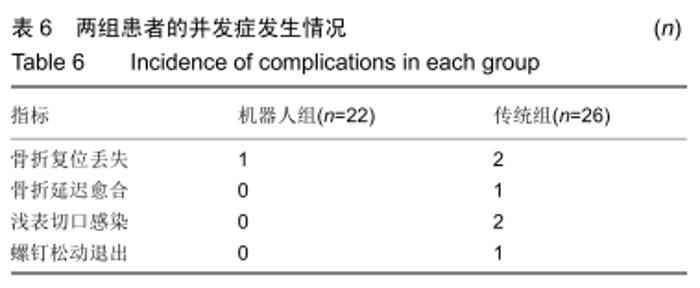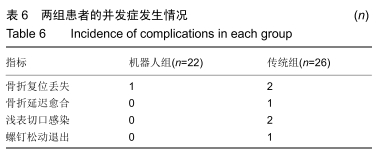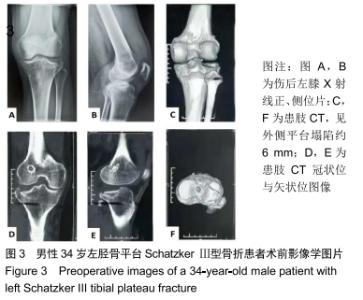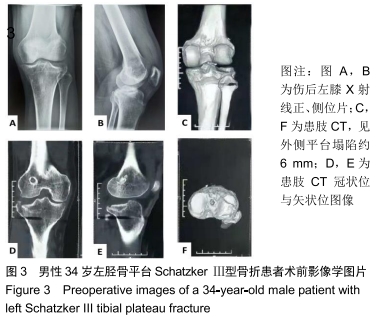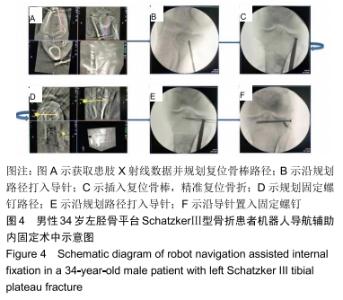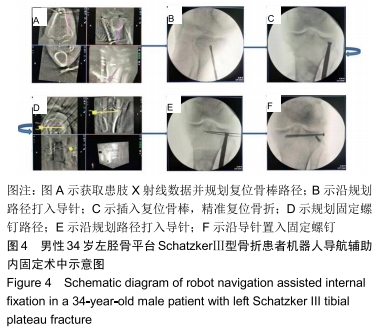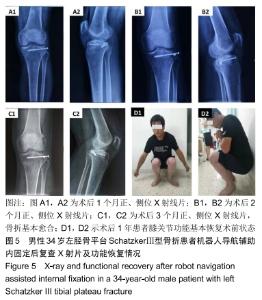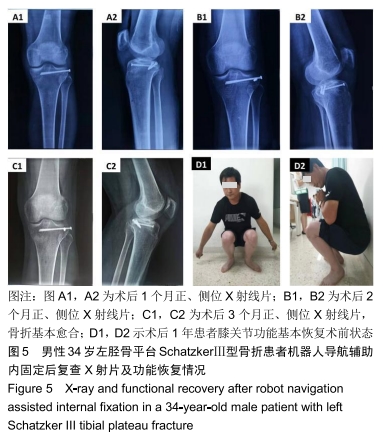[1] KUGELMAN D,QATU A, HAGLIN J, et al. Complications and unplanned outcomes following operative treatment of tibial plateau fractures. Injury. 2017; 48(10): 2221-2229.
[2] HUAFENG Z, ZHIJUN L, QIAN X, et al. Analysis for clinical effect of virtual windowing and poking reduction treatment for Schatzker III tibial plateau fracture based on 3D CT data. Bio Med Res Int. 2015;2015:1-5.
[3] ZHANG P, LIAN K,LUO D, et al. A combined approach for the treatment of lateral and posterolateral tibial plateau fractures. Injury. 2016;47(10): 2326-2330.
[4] ELABJER E,BENČIĆ I, ĆUTI T, et al. Tibial plateau fracture management: arthroscopically-assisted versus ORIF procedure - clinical and radiological comparison. Injury, 2017;48 Suppl 5: S61-S64.
[5] TIMMERS TK, VAN DER VEN DJ, DE VRIES LS, et al. Functional outcome after tibial plateau fracture osteosynthesis: a mean follow-up of 6 years. Knee. 2014; 21(6):1210-1215.
[6] DUWELIUS PJ, RANGITSCH MR, COLVILLE MR, et al. Treatment of tibial plateau fractures by limited internal fixation. Clin Orthop Relat Res.1997;(339):47-57.
[7] LIU HS, DUAN SJ, XIN FZ, et al. Robot-assisted Minimally-invasive Internal Fixation of Pelvic Ring Injuries: A Single-center Experience. Orthop Surg. 2019;11(1):42-51.
[8] MCNAMARA IR, SMITH TO, SHEPHERD KL, et al. Surgical fixation methods for tibial plateau fractures. Cochrane Database Syst Rev.2015;(9):CD009679.
[9] WANG Z, TANG Z, LIU C, et al. Comparison of outcome of ARIF and ORIF in the treatment of tibial plateau fractures. Knee Surg Sports Traumatol Arthrosc. 2017;25(2): 578-583.
[10] LIU HS, DUAN SJ, LIU SD, et al. Robot-assisted percutaneous screw placement combined with pelvic internal fixator for minimally invasive treatment of unstable pelvic ring fractures. Int J Med Robot. 2018;14(5):e1927.
[11] LONG T, LI KN, GAO JH,et al. Comparative study of percutaneous sacroiliac screw with or without tirobot assistance for treating pelvic posterior ring fractures. Orthop Surg. 2019; 11(3):386-396.
[12] THAKKAR SC,THAKKAR RS, SIRISREETREERUX N, et al. 2D versus 3D fluoroscopy-based navigation in posterior pelvic fixation: review of the literature on current technology. Int J Comput Assist Radiol Surg. 2017;12(1):69-76.
[13] WU XB, WANG JQ, SUN X, et al. Guidance for treatment of pelvic acetabular injuries with precise minimally invasive internal fixation based on the orthopaedic surgery robot positioning system. Orthop Surg. 2019;11(3):341-347.
[14] LIU HS, DUAN SJ, XIN FZ, et al. Robot-assisted minimally-invasive internal fixation of pelvic ring injuries: a single-center experience. Orthop Surg. 2019; 11(1):42-51.
[15] LE X, TIAN W, SHI Z, et al. Robot-assisted versus fluoroscopy-assisted cortical bone trajectory screw instrumentation in lumbar spinal surgery: a matched-cohort comparison. World Neurosurg. 2018; 120: e745-e751.
|
